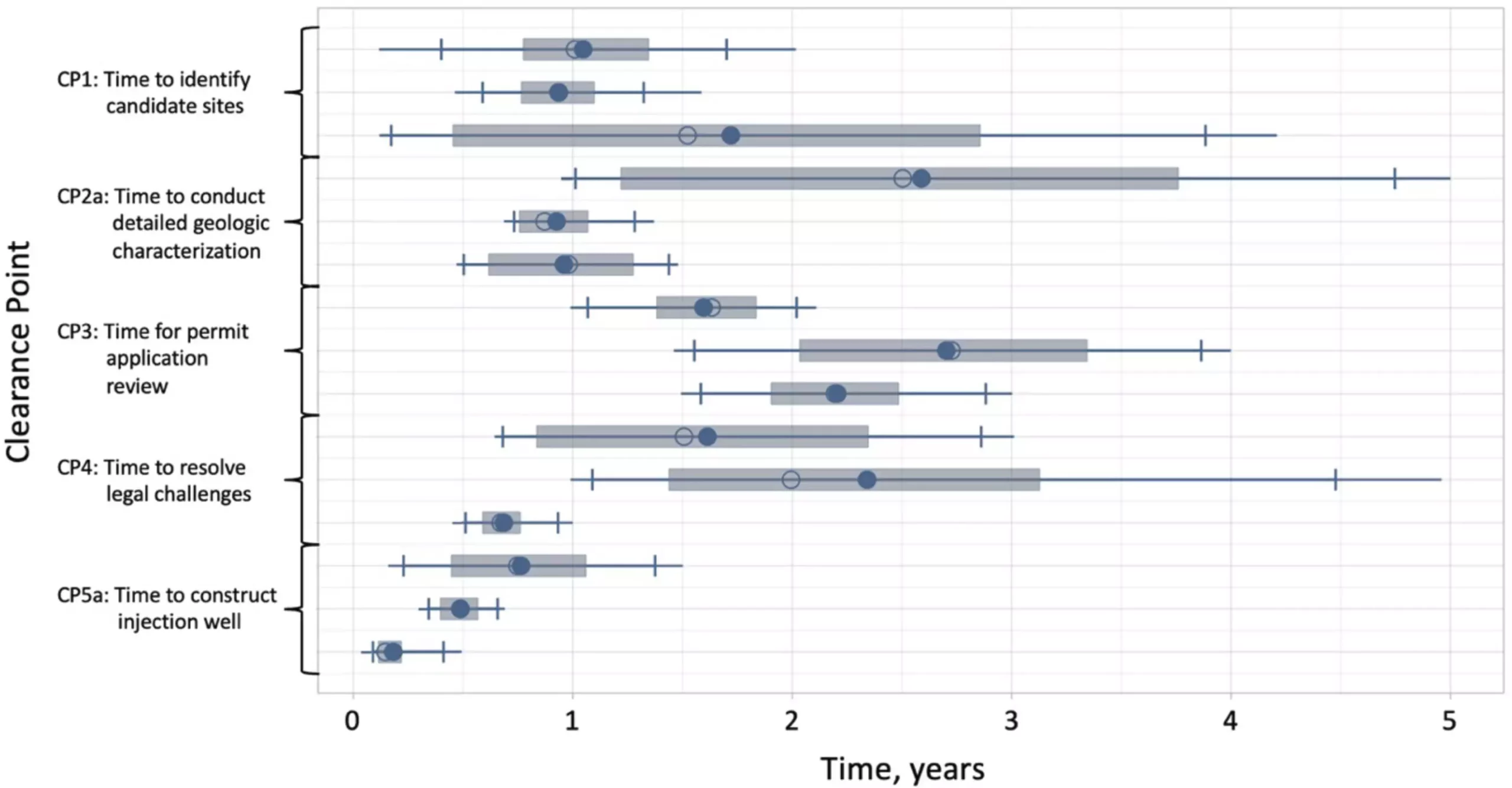Carbon capture and sequestration (CCS) play a crucial role in reducing carbon dioxide levels in the atmosphere and mitigating the impacts of climate change. However, the development and implementation of geologic sequestration sites face numerous barriers. Researchers from the Carnegie Mellon University Department of Engineering and Public Policy (EPP) have identified six clearance points that need to be addressed for a site to become operational. By estimating the timeframes for each clearance point, the researchers shed light on potential strategies to accelerate the process and meet the nation’s climate goals.
The clearance points identified encompass various stages, including site identification, preparation, EPA approval, legal challenges resolution, construction, and injection authorization. To obtain expert insights, Ph.D. student Emily Moore and faculty members Valerie Karplus and Granger Morgan combined expert judgments in a simulation framework. This enabled the projection of timeframes within which these clearance points could be cleared, providing a comprehensive understanding of the process.
The findings, published in the Proceedings of the National Academy of Sciences, indicate that the average time required for a site to become operational ranges from 5.5 to 9.6 years, with an upper bound of 12 years. Even with optimistic expert judgments, the estimates suggest a minimum of 2.7 years and a maximum of 8.3 years. These estimates highlight the need to expedite the process to make CCS projects impactful in achieving the nation’s 2050 climate goals. Moreover, the Upper Bound estimate poses a challenge as the Section 45Q CCS tax credit under the Inflation Reduction Act, which incentivizes projects, expires in 2032.
To maximize the utilization of CCS sites, the researchers put forth seven recommendations aimed at expediting the process. The recommendations address the clearance points that lead to the most significant non-technical delays, including pore space acquisition, the Class VI permit application review process, and potential litigation. Granting primacy to states like North Dakota and Wyoming, which currently possess Class VI primacy, could speed up the permitting process. Legislative efforts could further facilitate this expedited approach. Additionally, developing legal frameworks to minimize litigation and engaging communities where sites are being developed can help mitigate the risk of delays.
Previous research has emphasized the importance of public acceptance in the widespread application of emerging technologies. In the context of CCS, court challenges have the potential to significantly extend timeframes. Engaging the public and considering landowners as crucial stakeholders can play a vital role in reducing such delays. Proactively involving communities and addressing their concerns during the development of CCS sites can help build trust and facilitate smoother processes.
Over a decade ago, Granger Morgan and his team at Carnegie Mellon recognized the imminent need for CCS to decarbonize the nation’s energy system. They developed a comprehensive approach that addressed key issues, such as deep subsurface ownership, learning from experience, and long-term stewardship and liability. The recommendations and resulting book from their project were widely distributed to policymakers. However, the piecemeal approach to addressing these issues on a state-by-state basis indicates the need for a more cohesive national strategy.
Understanding the timeframes and barriers associated with the development and implementation of CCS sites is crucial for achieving ambitious climate goals. The Carnegie Mellon University researchers’ work highlights the need to expedite the process and provides actionable recommendations to overcome these barriers. By streamlining clearance points, involving stakeholders, and leveraging legislative efforts, the nation can move closer to widespread CCS adoption, ensuring a significant reduction in carbon dioxide emissions and fostering a more sustainable future.



Leave a Reply